Making Choices, Finding Solutions
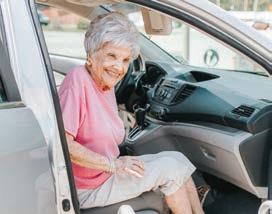
A guide to independence and wellbeing




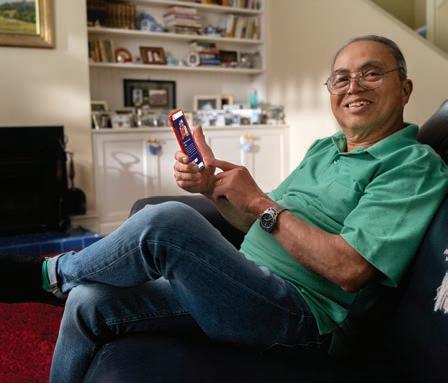 Powered by
Powered by
We acknowledge the Traditional Custodians of Country throughout Australia and recognise their continuing connection to land, waters, and community. We pay our respect to them and their cultures and to Elders past and present.
2 About your guide
Contents About your guide 4 About LiveUp ....................................................................................................................... 4 What is assistive technology?............................................................................................... 5 What are home modifications? 6 What is the role of a tradesperson? ..................................................................................... 7 Identifying your needs ......................................................................................................... 8 Finding solutions 9 Everyday activities checklist ............................................................................................... 10 Around the house ......................................................................................... 12 In the kitchen ................................................................................................. 19 In the bathroom ............................................................................................ 27 In the laundry ................................................................................................. 34 In the lounge .................................................................................................. 39 In the bedroom 44 Outside the house ........................................................................................ 48 Out and about 53 Your personal home safety plan ......................................................................................... 58 Allied health professionals ................................................................................................. 61 Useful resources ................................................................................................................. 64 References 66 Acknowledgements ........................................................................................................... 67
About your guide
This guide is designed to help you find and choose simple assistive products for all areas of your life. Your ongoing independence, safety and wellbeing is important. Assistive products, along with basic home modifications, can help you maintain and even regain control over how you live life every day. This guide includes suggested products available from well-known retailers and reliable online stores. You’ll also find a range of useful tips and advice from occupational therapists.
Please note that products are a suggestion only and may change over time. The information contained in this guide was correct at the time of printing.
For free personalised suggestions for healthy ageing, take the LiveUp quick quiz and find advice, local activities, and assistive products tailored to your needs, so you can age your way. Scan me to find out more
About iLA and LiveUp
iLA is a not-for-profit organisation that supports the community to make genuine and informed decisions through the provision of independent information, navigation, and capacity-building initiatives such as LiveUp.
LiveUp is a free, digital healthy ageing guide that can be accessed from the comfort of your own home. It provides you with the ideas, tools, and guidance designed to help you add life to your years, not just years to your life.
LiveUp features an easy quiz and expert advice connecting you to local services, support networks and assistive products that are personalised to help you with your healthy
ageing journey. The science shows that only 25% of ageing is attributed to genetics, the remaining 75% of age related issues are due to lifestyle choices.

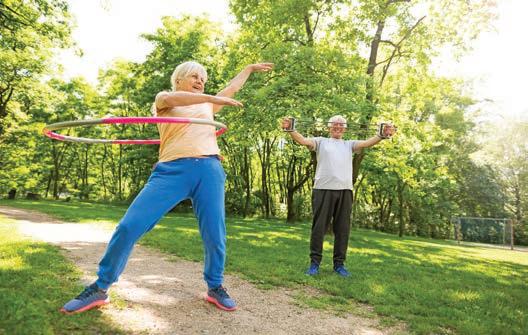
Discover LifeCurve™ as a part of LiveUp to plot your journey and track your progress.
LifeCurve™ is backed by more than 15 years of evidence-based research that will help you understand your ageing journey.
LiveUp makes it as easy as 1.2.3 to find information and support to you to age your way. Welcome to the upside of ageing.
Discover more at liveup.org.au or call 1800 951 971
4 About your guide, iLA and LiveUp
What is assistive technology?
‘Assistive technology is an umbrella term covering the systems related to the delivery of assistive products and services. Assistive products maintain or improve an individual’s functioning and independence, thereby promoting their wellbeing.’
- World Health Organisation
This guide focuses on simple assistive products and common everyday solutions you can find in local pharmacies, supermarkets and hardware stores, such as electric can openers, jar openers and non-slip bath mats.
Feature fact
Roughly 50% of the difficulties older people experience with daily living activities can be overcome using simple AT equipment or modifications.




5
5
What are Assistive Technologies?
What is assistive technology?
What are home modifications?

Home modifications are changes you can make to your home so that you can do the tasks and activities that you want to do. The aim is to reduce any barriers, pain or difficulty so that you can enjoy your life.
This guide focuses on simple home modifications that don’t involve structural changes to your house. You’ll also find advice on who to talk to for additional support and guidance.

Top Tip
Making changes to your home could involve an occupational therapist and a professional tradesperson to make sure the modification is right for you, your body and your home, while also meeting Australian Standards.
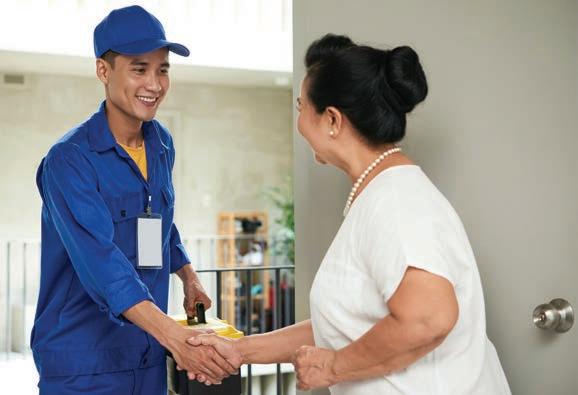

6 What are home modifications?
What is the role of a tradesperson?
What is the role of a tradesperson?
Qualified tradespeople like builders, plumbers and electricians are trained to understand the structural and technical aspects of home modifications. They have the knowledge to help you:

• Choose the right materials (e.g. a timber ramp v’s a metal ramp).
• Provide you with technical advice.
• Interpret and abide by building codes and Australian Standards.
• Understand the practicality of an occupational therapist’s recommendations (e.g. not installing a grab rail into an unsafe studded wall).
Additional considerations:
• Shower waterproofing Most bathrooms have a layer of waterproofing beneath the tile to protect your home from water damage. Drilling through this layer may require resealing to prevent damage after the installation is complete (e.g. a shower grab rail).
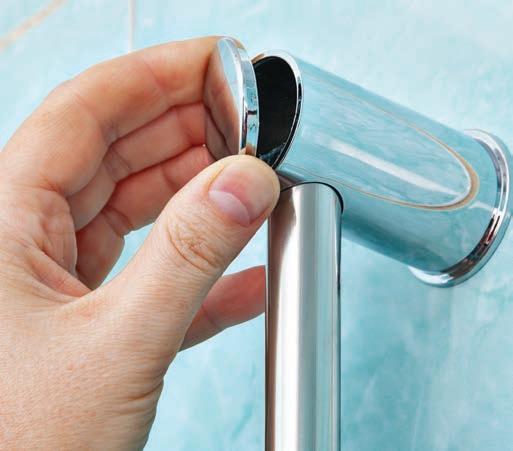
• Suitable walls and fittings The type of walls you have may affect the type of fixing that can be used to fit assistive products like grab rails. It’s important to choose the right type of rail with the right type of fitting for your wall or surface so that they don’t cause damage and they can withstand the force placed on them when in use.
• Type of grab rail Make sure your grab rails are properly installed and can hold your weight. A towel rail only holds a few kilos and may rotate, so it isn’t safe to hold onto while navigating your bathroom. Grab rails are widely stocked at hardware stores and come in various materials, shapes and dimensions, each with a different set of benefits. To make sure you have the right rail, it’s best to get professional advice.
Top Tip
Houses built before 1988 might contain asbestos so it’s best to find a local tradesperson to consult on your modifications. They’ll also be able to help you determine other important things, like whether water outlets are too close to power sockets.
7
Identify your needs
How your body works
The saying goes that good health is not just the absence of disease. While there is no typical older person, people over the age of 70 may experience several health conditions at the same time but continue to do the things that are important to them. A combination of a person’s physical and mental resilience is a much better predictor of their health than the presence or absence of illness.

Research shows that keeping your body moving is vital to maintaining good health, especially as we age. Using assistive products and making home modifications can:
• Make daily tasks easier, so you have more energy.
• Relieve the strain on your joints.
• Reduce pain in your hands, hips and knees.
• Give you the confidence to get out and enjoy your hobbies and social activities.
Feature fact
At least 50% of all age-related decline in muscles, bones and joints is caused by not using them enough, but it doesn’t end there! Studies of people over the age of 100, show that social and mental activity is also critical for health and longevity. Engaging in intellectual stimulation, like learning new things, having healthy relationships and participating in a supportive community, are all just as important as diet and exercise for ongoing health and wellbeing.
What is wellness?
Support provided through the Commonwealth Home Support Program is underpinned by a wellness philosophy. A wellness approach focuses on positive changes that slow the impacts of ageing by improving health and wellbeing. This means building on an individual’s existing capacity and potential so they can optimise their physical, social and emotional abilities and live as independently and as connected to the community as possible. AT and home modifications are a key component of this approach. Both enhance accessibility and safety in your home by supporting you to stay independent.
8 Identify your needs
Finding solutions
Finding resourceful ways to adapt your surroundings using assistive products and home modifications requires an understanding of four areas:



You can find suggestions in this guide based on your answers to these questions as you follow this process. Do it for each activity you’re trying to tackle and eventually you’ll notice you can expand the range of tasks and activities you’re able to do.
Fill out the ‘Everyday activities checklist’ on the next page to help identify your needs and then head to the ‘Solutions’ section for some easy-to-follow advice and helpful buying guides.
Finding solutions 9
Figure 1.1 - A theoretical model to guide consumer driven choices. Adapted from: A Competency Framework for Trusted Assessors. M. Winchcombe & Dr. C. Ballinger (2005).
10 Everyday activities checklist
Everyday activities checklist
Use the simple checklist below to help you identify your needs in each area of your life so you can discover which solutions might work best for you.
I am interested in making these tasks and activities easier:
Environment Task/Activity Yes Page Around the house Sweeping, vacuuming and mopping the floor 12 Cleaning the bath, shower and toilet 13 Dusting 13 Picking up and reaching things on the floor 14 Using a telephone, smartphone or seeing the numbers 15 Using a computer 16 In the kitchen Opening jars and tins 19 Turning the taps on and off 20 Cutting up food 20 Pouring the kettle 21 Lifting pots and pans 21 Reaching into cupboards 22 Turning the cooker dials 23 Using a cooking timer 23 In the bathroom Washing and drying feet and toes 27 Putting socks, stockings and shoes on 28 Using zips, buttons and clasps 29 Clipping nails 30 Managing medications 30 In the laundry Carrying laundry 34 Hanging out the laundry 35 Using the washing machine 36 Ironing 36
Checklist adapted from the HDG Consulting Group checklist August, 2014.


Environment Task/Activity Yes Page In the lounge Using TV remotes 39 Seeing and holding materials for crafts 40 Reading and holding books 41 In the bedroom Changing bed linen 44 Seeing at night 45 Sleeping 45 Outside the Using keys and door locks 48 house Gardening 49 Home maintenance 50 Out and about Getting in and out of the car 53 Carrying shopping bags 54 Finding the car 54 Keeping fit and active 55 Everyday activities checklist 11
Around the house
Questions to consider:
Are your cleaning products kept together and easily accessible?


Are your extension cords in good working order? Do you make sure not to run them across rooms, doorways and corridors?

Do your rugs create a trip hazard? Can you stick them to the floor? Do they have non-slip backing to stop them moving around?
Can you reach things high up, low down or on the floor? Do you stand on furniture or kneel on the floor to reach things? Can you use tools or equipment with long handles?
Do you know how to adjust your chair, desk and workspace to prevent pain in your back, neck, wrists, and arms?
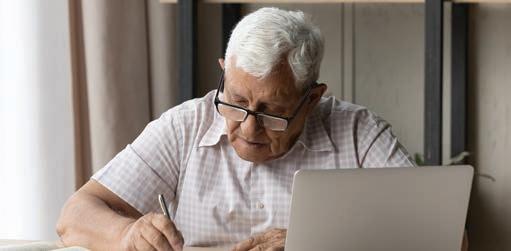
Top Tip
Lightweight products and equipment with long handles require less effort to use, which also reduces stress on your joints.
12
Plan
When you plan a task, you can reduce extra steps and wasted energy. Try dividing your task into manageable chunks throughout the week rather than trying to tackle it all in one day.

Prepare
Store all your cleaning products together in a light, accessible basket with a handle. Try using a trolley to wheel things around rather than carrying items long distances and organise workspaces so they’re easy to access and ready to use.
Pace Posture
Alternate between doing light tasks and more energetic activities. Try incorporating both work and rest into all your tasks, as even short breaks of five minutes increase your overall endurance.
Support your body to avoid pain and soreness from poor posture. You can practice maintaining head, shoulder and hip alignment while standing and avoid awkward bending or reaching during activities. Changing position every 15 minutes, kneeling rather than bending and setting up your chair, desk and seated position correctly will also reduce pain and stiffness.
Around the house 13
Simple solutions
A few simple products go a long way towards keeping your home clean and tidy. You can see some suggestions to help you around your home below.
Consider organising a professional cleaner to do heavy cleaning like scrubbing, vacuuming and mopping for you. Each month you could add in a different task. For example, in December, ask the cleaner to clean the windows. In January, ask them to clean the oven, and so on throughout the year. This way your home will stay clean and you can spend your energy on things you enjoy.

Cleaning floors
Try using a dustpan and brush with long handles to avoid bending. A light vacuum with a longer handle can help you keep on top of daily dust and dirt between monthly deep cleans with less effort. A long-handled steam mop eliminates the need for a heavy mop and bucket too.
Black & Decker 9 in 1 Steam Mop

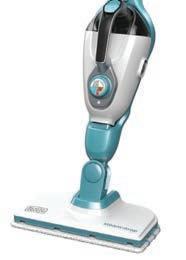

This easy-to-use steam mop quickly switches into to a versatile handheld steam cleaner. Kills 99.9% of bacteria and germs.
bunnings.com.au
Sabco Long Handle Lobby Broom & Dustpan Set

This modern set has a long handle to help avoid bending, with a compact design for easy storage.

mitre10.com.au
Electrolux Ergorapido
This stick vacuum is lightweight and powerful. Clean without stopping to change attachments with the included multi-floor nozzle.
thegoodguys.com.au

14 Around the house
Dusting
Dusting is a light activity you can do around the house to keep it feeling fresh. Static dusters pick up more dust than other cloths and often have retractable, lightweight, long handles for hard-to-reach places. Try using a damp microfiber cloth as this collects more dust than a dry cloth. You can repurpose your old socks by placing a clean damp sock over your hand. To remove pet hair, put a rubber glove on one hand, dampen it with water and then run it lightly over your furniture.

Cleaning the bathroom
A little ongoing maintenance in the bathroom makes weekly cleaning quicker. Try a non-scrub spray cleaner and soft-grip squeegee after showering to reduce excess water and wipe away soap scum. A scrubbing brush with a long handle will reduce the need to bend and twist to reach awkward spots. Keeping a spray cleaner and long-handled brush near the toilet helps keep it clean regularly.
Oates Soft Grip Squeegee


With a soft grip handle for user comfort, this squeegee is ideal for cleaning windows, tiles, and shower screens.

mitre10.com.au
Vileda Mop Bath Magic

This mop includes an extendable handle to reduce bending and stretching and a swivel head for cleaning difficult spots.
Sabco Extension Electrostatic Duster
This electrostatic charged duster head attracts dust like a magnet. Extendable handle for those hard to reach places.
woolworths.com.au bigw.com.au
Around the house 15
Around the house
Picking things up off the floor
A lightweight reacher with a long handle means you can grab hold of items and pick them up off the floor or bring them down from up high.
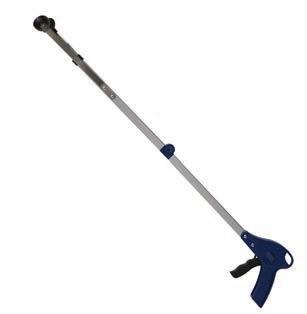
Try using a kneeling pad with a handy frame to give you extra support and comfort if you do need to kneel to get something. The padding protects your knee and the frame will help you get back up. Instead of having to reach down to turn appliances on and off, you could install a power board with a remote control to reduce bending and awkward reaching that could cause strain.
Long Handle Reaching Aid
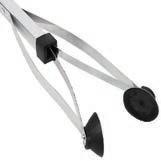
This pick up and reaching tool is perfect for many situations. The suction cups grabber ends allow for a firm grip with an 820mm reach.
bunnings.com.au
Foldable Seat/Kneeler

Ideal in the garden this product provides comfort and support. Featuring an extra thick foam pad and strong frame.

bunnings.com.au
Arlec Remote Controlled Power Outlet
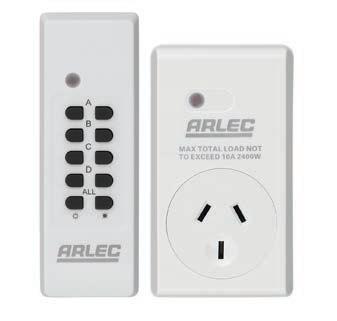
This remote-controlled power outlet is easy to setup and helps you turn appliances on and off without bending.
bunnings.com.au

16
Using a phone or mobile
There are now a wide range of telephones with large numbers and volume booster controls. If you’re still struggling to see the handset, try using a magnifying glass with a built-in light to help you see.

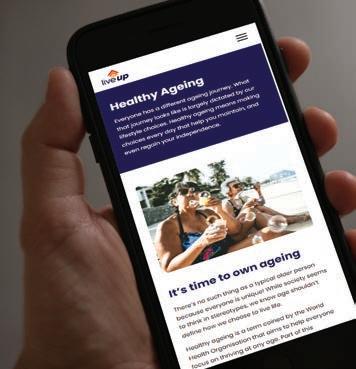
When selecting the right mobile phone, there are a few options and features to consider, such as the size of the screen, which operating system they use and whether they have accessibility features. Programs like ‘Siri’ on Apple iPhone and ‘Hey Google’ on Android phones can be used instead of dialing or looking up phone numbers. For example, if you were trying to call your friend Harry, you say “Siri/Hey Google, call Harry”. Save the name of each person in your phone contacts so the program can find them.
Arlec 2m White Ringpull Extension Lead

This extension lead is perfect for power where you need it, with a ringpull plug to aid disconnection.
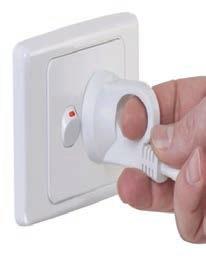
bunnings.com.au
Vtech Corded Phone
This phone has a handsfree speakerphone, large backlit display, a volume booster and is hearing aid compatible.
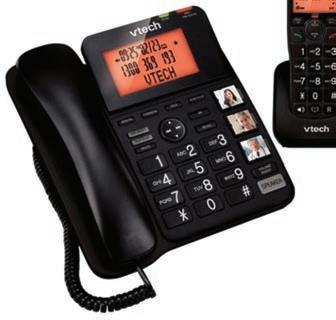

jbhifi.com.au
Uniden Sight and Sound
Enhanced Cordless Phone
This cordless phone has a large display and buttons, integrated answering machine with slow playback, and extra loud volume.
jbhifi.com.au

Around the house 17
Using a Computer or tablet
Setting up your computer or tablet so that it’s accessible means you’ll be able to use it more often with less effort. Try setting up a desk lamp to provide brighter lighting but make sure the light is positioned below eye level to reduce glare.


Check if your computer can support a bigger screen so you can read it more easily. Both Microsoft and Apple platforms offer a range of built-in screen enhancement features. These include high contrast colour schemes, larger standard font and improved visibility of the mouse pointer. The latest version of Microsoft Windows also has an inbuilt full screen magnifier that is comparable to many of the purpose-built screen magnifier programs.
There are separate keyboards for laptops that have extralarge keys, as well as keyboard stickers that improve contrast.

Top Tip
To ensure your computer is set up safely, the Australian Government and the Australian Cyber Security Centre provide lots of helpful information to help you stay safe online. Head to their website at www.cyber.gov.au for all the latest information.

18 Around the house
In the kitchen
Questions to consider:
Do you store everyday items within easy reach on the bench top or by the stove?

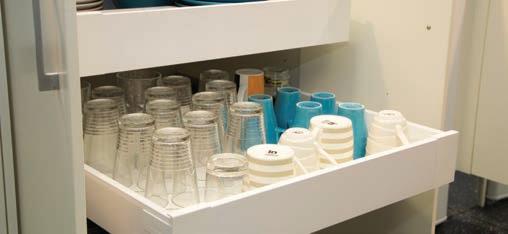

Are your cupboards and shelves within easy reach? Do you have to stand on your tiptoes, stretch or get down on the floor to reach things?
Do you mop up spills as soon as they happen?

Do you have a working smoke alarm installed?
Do you have a fire extinguisher and fire blanket?
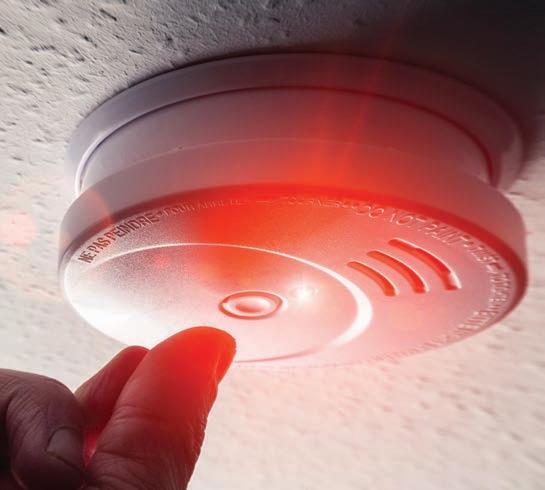
19
Plan
Create a meal plan for the week to make it easier to prepare healthy meals. This ensures you have the right ingredients on hand and reduces the likelihood of missing meals. You could purchase chopped up frozen vegetables and fruit so that you always have healthy ingredients in stock. Try the cook once, eat twice philosophy! By cooking larger meals and re-using or freezing left-overs you cut down on the number of times you need to cook a meal from scratch.
Prepare
Prepare your cooking space and set up ingredients on the bench before you start cooking. Try sitting down for meal preparation to reduce strain on your body and conserve your energy.


Pace
Consider breaking up the task. For example, try preparing your meat in the morning and your vegetables in the afternoon. Cleaning as you go or while items are cooking means you won’t have a big job to tackle after eating. Try cooking one pot wonders that reduce washing up. Slow cookers save time, are easy to use, keep the kitchen cooler in warmer months and use less energy.
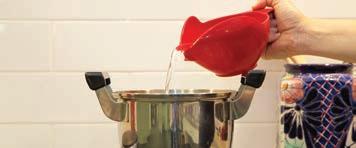
Top Tip
Sitting instead of standing reduces your personal energy use by 25%. Consider which kitchen tasks you can do sitting down so that you can spend your energy doing the things you enjoy. For example, you could prepare vegetables at the dining table.
20 In the kitchen
Simple solutions
A few easy-to-use products will assist you in the kitchen. You can see some simple suggestions to help you with kitchen tasks and cooking below.

Opening jars and tins
A wide range of low-cost jar, bottle and can openers reduce the need to use force or have a strong grip, protecting the joints in your hands and wrists. Try running a jar under hot water to expand the metal, before drying it off and using the equipment to open it.
One Touch Can Opener
This automatic can opener makes it easier to take the lid off a can and leaves no sharp edges.


ilsau.com.au
Oxo Good Grips SoftHandled Can Opener


This can opener has big, soft, slip-proof santoprene handles and an oversized grip that is extremely easy to use.
bunnings.com.au
Brix Cankey Ring-Pull Can Opener
This can opener is a practical kitchen product to help you avoid sore fingers and broken nails.
doability.com.au
In the kitchen 21
Turning the taps on and off
Many crossbar taps require you to grip, hold and turn them using substantial strength. A simple device like a plastic tap turner or even replacing old taps with easy-to-use lever taps, makes turning them on and off easier.
Chopping or cutting food
Holding a knife for long periods of time can become uncomfortable if the handle is short or thin. A wide choice of kitchen utensils are made with easy to hold, non-slip handles that make gripping easier, reducing strain on your hands. If you find it hard to hold a piece of food on the chopping board, you can use a spike board and a non-slip mat to stop items moving around. For the ultimate in ease when preparing food, use an electric food processor with interchangeable blades to help you with mixing, chopping, grating or blending at the touch of a button.
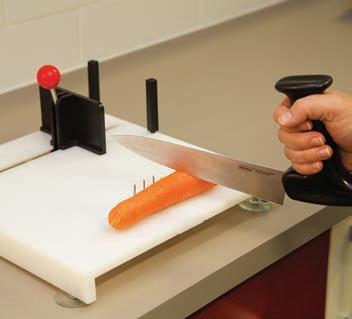
Reaching high and low cupboards
Instead of having to bend down and reach into the cupboard, let the shelves come out to meet you. There are many simple cupboard inserts that make corner, high and low cupboards easier to access with the installation of a pull-out or pull-down shelf, or carousel style shelving in corner cupboards.
Tap turner
This tap turner helps you to turn taps with a moulded plastic turner to fit over the tap head.

mobilityhq.com.au
Dycem Anchor Mats
These anchor pads are made from an effective non-slip material to grip to surfaces like worktops, trays, and tables.
ilsau.com.au
Etac Food Preparation Board
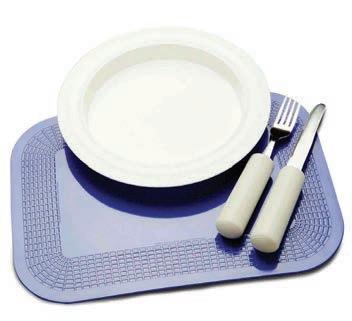
This multi-functional food cutting board makes chopping, whisking, grating and peeling much easier so these tasks are safer.
bettercaremarket.com.au
Sunbeam Multiprocessor
355 Watts
This multipurpose blender easily chops dense foods. Five speed settings let you adjust to get the right consistency.
thegoodguys.com.au

22 In the kitchen
Pouring the kettle
Some kettles are difficult to hold, heavy to lift and hard to fill. There are several smaller, lightweight versions to choose from that make it easier to use the kettle. Try filling the kettle using a plastic jug and have the kettle sitting in a kettle tipper, to make it easier to pour without lifting it.

This kettle and tipper are ergonomic with smooth pour action, stable non-slip base and easy-to-read water level.
doability.com.au
Have a cup of tea, coffee or any hot beverage using this multi-directional, cord-free, easy-to-use kettle.
kmart.com.au
A kettle tipper to suit most cordless kettles. This innovative design makes pouring the kettle safe and easy.
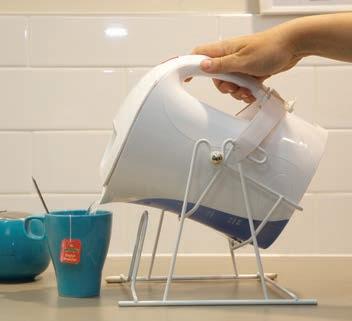
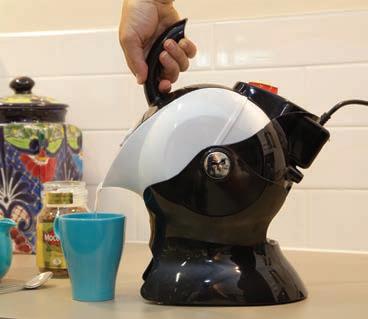

ilsau.com.au
Practa
Utilise unused storage space in corner cabinets. To suit cabinets 60cm-90cm in height. Holds up to 5kg per basket. Easy to install.
bunnings.com.au
This clever pull-out surface helps when using heavy appliances (up to 30kg) or chopping veggies and hides away when you push it in.
bunnings.com.au
This wire basket helps you see what’s inside, even high up. Ideal for increasing storage capacity in your kitchen cabinets.
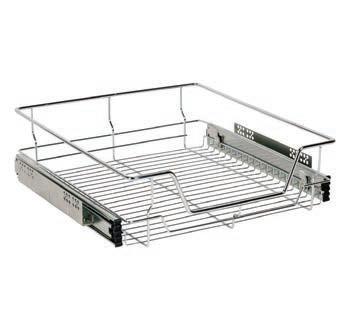
bunnings.com.au
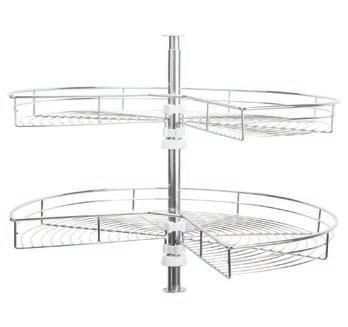
In the kitchen 23
1.7L Cordless Kettle
Uccello Easy Pour Kettle and Tipper
Cordless Kettle Tipper
Solutions Chrome Corner Cabinet Carousel
Practa 450mm Chrome Pullout Basket
Lifting pots
Try filling empty pots using a plastic jug and consider buying pots with two handles to make them easier to carry. Use steamer inserts that lift out of your existing pots once your food is cooked, so you can leave the pot of water to cool and empty it later.

Turning the cooker dials

The dials on your cooker can become hard to turn or the numbers wear off making it difficult to see them. Using contrasting tactile dots can help you see and feel when the dial is on, off or at the right temperature. You can also buy handy stove dial turners to help you turn the dials.


Steamer Insert
This steamer insert with two handles helps transfer cooked food to your plate without touching a boiling hot pan.
kmart.com.au
Bump Dots
These dots help you see and set dials in the kitchen, as well as around the house.
shop.visionaustralia.org

24 In the kitchen
Tactile Low Vision Timer
This big bold timer has large numbers and a loud ringing bell to make it easier to prepare food.


shop.visionaustralia.org
Using the cooker timer
Use a timer to prevent overcooking meals. Automatic shut off devices can be fitted to gas and electric stoves to turn them off if the stove is accidentally left on (this type of safety feature needs to be professionally installed).

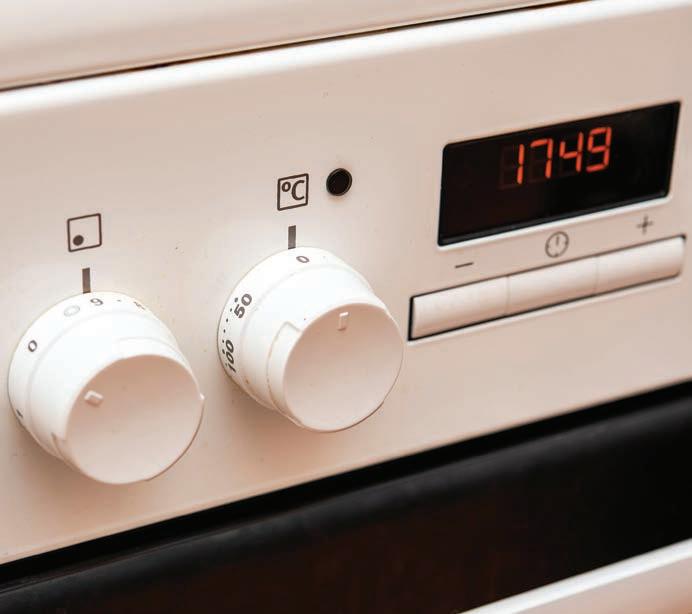
Etac Uni Turner
This dial turner is designed to ensure you get a good grip on handles, knobs and light switches.
easycareaustralia.com.au
In the kitchen 25
Simple kitchen modifications
Create extra bench space by placing a chopping board on top of a sturdy open drawer.
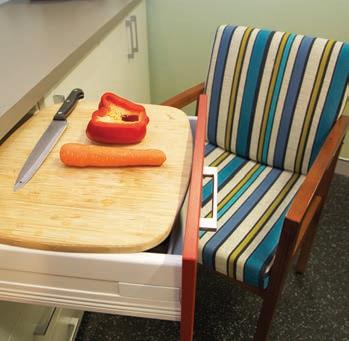
Install adjustable, pullout, pivoting or revolving carousel-style shelving.

Install a dishwasher with pull-out drawers.
Install a pull out bench underneath the microwave or air fryer to provide a heat resistant surface.

Install a wall oven with a side opening door instead of a floor standing or low level oven.


Replace cupboard and drawer knobs with easy to open D-shaped handles.

26 In the kitchen
In the bathroom
Questions to consider:
Do you have non-slip flooring in your bathroom?
Do you have a non-slip mat in your shower or bath?
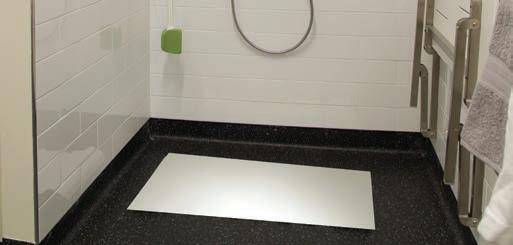
Do you have grab rails next to the toilet, shower and bath?
Do you find yourself using the door frame, towel rail or other bathroom fixtures for support?

Do you have a plug-in sensor night light?

Can you leave a light on at night to help you see your way to and from the bathroom?
Do you have a thermostat to control how hot your water gets?

What are Assistive Technologies? 27
27
Plan
Top Tip
Try using a towelling robe to help dry your body and sit down to dry your feet.

Prepare
Group items for the same task together so that you have everything you need. Try laying out your towel, clothes and any products you need next to you on a chair or dry surface. Having a sturdy chair in the bathroom to sit on for drying and dressing takes the strain off your body and allows you to take your time.
Products with long handles make it easier to reach your lower body, back and hair, while a magnifying mirror makes it easier to shave or put your make up on. Foam tubing or non-slip handles make items easier to hold and maneuver. Try using a tube squeezer to help get toothpaste onto your toothbrush.

Pace
Sitting down saves you lots of energy and makes it easier to reach your lower legs and feet. Try washing your upper body first and then your lower body using products with long handles to help you.
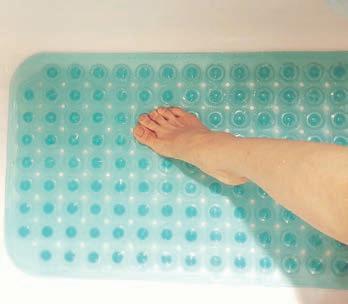

28 In the bathroom
Simple solutions
A few simple products will make essential everyday bathroom tasks easier. You can see some suggestions to help you in the bathroom below.
Washing and drying feet and toes
Using brushes, sponges and toe washers with long handles reduces the need to bend to reach your feet. Have loops or soft handles sewn onto towels to help grip the towel when drying your feet and back. Use a clean, dry, long handled toe washer to dry your feet. Alternatively, wrap a towel around a dressing stick with a long handle.


Deluxe Shower Chair
This chair is height adjustable and has a large comfortable seating area, sturdy frame and non-slip feet.

bunnings.com.au
Shower Corner Grab Bar with Vertical Rail

When installed properly this grab rail exceeds Australian standards and makes navigating the shower safer.
bunnings.com.au
Foldable Wall Mounted Shower Seat
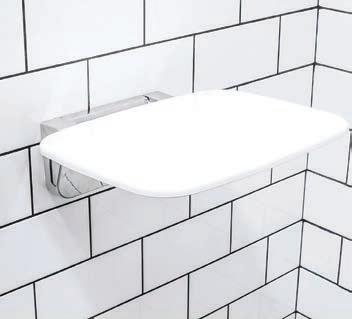
This handy seat helps you shower independently and then folds away in an upright position when not in use.
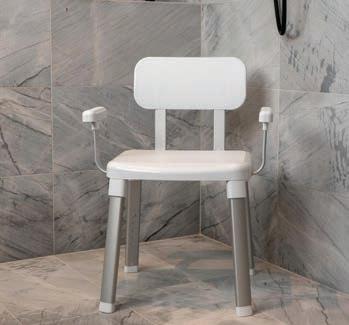
bunnings.com.au

In the bathroom 29
Putting socks, stockings and shoes on
Try sitting down to dry yourself and get dressed and use a foot stool to help you reach your feet. If reaching your feet is difficult, using equipment with a long handle like shoe horns, sock or stocking aids and dressing sticks can make it much easier. You might like to consider shoes with Velcro straps or elastic laces instead of having to tie your laces.



ETAC Beauty Comb
This longer comb helps if you have trouble reaching. The handle is curved to ensure comfort and control.
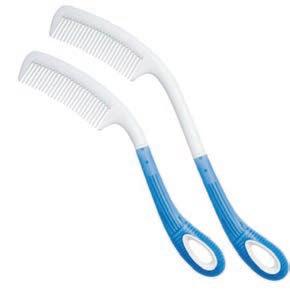
easycareaustralia.com.au
Brix Tubemaster
Designed to squeeze the toothpaste from the tube. Made from quality plastic with no sharp edges.

kitchenware.com.au
Medalist Anti Slip Adhesive Tape
This tape provides grip even in wet conditions. Ideal for use on stairs, ramps, steps, entrances, and exits.
mitre10.com.au
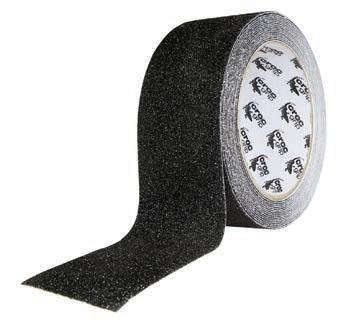
30 In the bathroom
Using zips, buttons and clasps
If you find pulling up zippers or doing up buttons fiddly, try using a button hook or zip puller loop instead. This can also help keep zips up by hooking the loop over a top button. Make sure to dress a weak or painful arm or leg first for less discomfort.


Barelli Non-Slip Rubber Bath Mat
This machine washable, nonslip bath mat will help avoid any potential slips or mishaps in the bathroom.

bunnings.com.au
Long Handle Bath Sponge


This sponge helps you reach your legs, feet and back when bathing, especially for those with limited mobility.
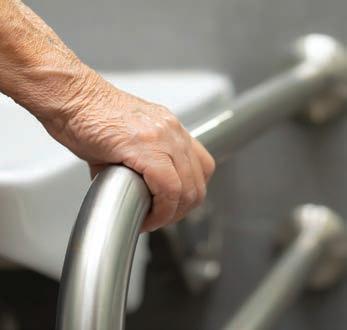
agedcareandmedical.com.au

Long Handle Toe Washer
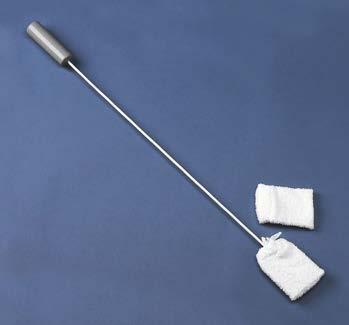
The long handle helps you reach your feet whether you’re sitting or standing without having to bend down.
bettercaremarket.com.au
In the bathroom 31
Clipping nails
Suction nail clippers hold themselves in place to make one handed cutting easier. Modified large nail clippers will also help you see what you’re doing.

Managing medications

You can find medication organisers at your local pharmacy. Most organisers can carry up to four pills for each day. Talk to your local pharmacist about pill crushers or splitters to help you take the correct dosage so that you feel your best. There are also products to help you hold your eye open to make administering eye drops easier. Another handy tool to consider is a pill reminder alarm. You can set these up on your mobile or leave an alarm next to your pill organiser.
This 2-sided mirror has a regular mirror and a magnifying mirror ideal for shaving or putting on makeup.

ikea.com.au
Dorking Stocking Aid
A simple device to help you put on a stocking or sock, especially if bending and reaching is difficult.

Hush Puppies Men’s Shoe
This wide-fitting shoe with velcro fastening features specialised bounce shock absorption to keep your feet at ease.

caringclothing.com.au
Aidapt Long
Handle Shoehorn
Ideal for helping people put on their shoes when bending, reaching and gripping is a challenge.

32 In the bathroom
mobilityhq.com.au bettercaremarket.com.au
Trensum Swivel Magnifying Mirror
Lever Mixer Taps
Installing lever taps is a great alternative to traditional twist taps especially if you have decreased hand strength.
Simple bathroom modifications:
• Install lever taps to make turning taps on and off easier.

• Install a hand-held adjustable shower head to wash your back and feet.

• Try using a shower seat to make washing easier.
• Install non-slip adhesive on the bathroom floor and inside the bath and shower.
• Plug in a sensor night light to help you see your way to and from the bathroom.

Propet Olivia Women’s Shoe
This easy slip-on shoe is orthotic friendly and has adjustable straps and removable dual inserts. Ideal for foot conditions.

athletesfoot.com.au
Button Hook and Zipper Puller
This tool has a diamond shaped end for catching and threading buttons and a hook end for a zipper.

bunnings.com.au ilsau.com.au
superpharmacyplus.com.au
Dressing Stick

This assists in dressing and removing garments. Features a double wire hook and rubber tip at each end.

In the bathroom 33
In the laundry
Questions to consider:
Do you have level access from your laundry to the outside clothes line?

Do you have a sturdy chair or table set up next to your clothes line to put your laundry basket on?


Do you have space in your home to leave a clothes airer up where it will not be a trip hazard?
Do you have an apron with a large front pocket to carry and store pegs?
Top Tip
Hanging wet shirts and tops to dry on a hanger reduces the need to iron them once they’re dry.

34
Reduce your workload by purchasing clothes that don’t need to be ironed. Keep washing powder or liquid next to the machine and purchase them in small containers to lighten the lifting load.

Keep your ironing board set up in an accessible place to reduce unnecessary steps. By only filling the iron with a small amount of water you can reduce the weight you’re lifting. Using the steam function or gently dampening clothes makes them easier to iron too.

Remove clothing from the machine one item at a time to reduce the weight you’re lifting. Divide ironing into manageable 20 to 30 minute chunks and rest every 5 to 10 minutes to conserve your energy. Try using a trolley to carry small loads to the clothesline. Using a dryer instead of a washing line eliminates the need to hang clothes up to dry and can reduce ironing.
Place your washing basket on a chair so you don’t have to repeatedly bend down. When sitting to iron, use a perching stool with a back for support. To avoid twisting, a swivel seat makes reaching things easier. Make sure to set your ironing board at the correct height for you. Your elbow should be level with the top of the iron handle.
In the laundry 35
Pace Posture Prepare Plan
Simple solutions
A few simple products make keeping on top of laundry tasks easier. You can see some suggestions to help you in the laundry below.

Carrying laundry
A washing basket trolley means you don’t have to carry heavy baskets to and from the laundry and stops you having to bend over repeatedly to hang them out. You can also hang clothes on an airer inside to reduce the number of steps you’re taking.
Hills Premium Laundry Trolley
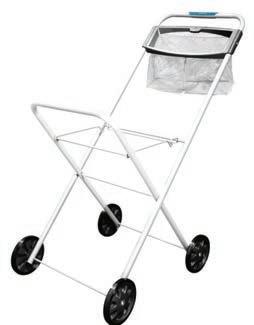
Lightweight yet sturdy, this trolley holds most basket types and helps you easily transport your laundry.
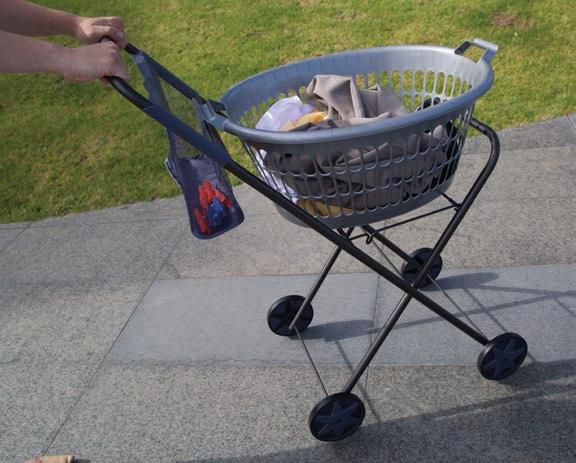
mitre10.com.au
Sunfresh Folding Laundry Trolley


Take the strain out of doing laundry with this trolley that elevates wash loads to an accessible height.
bunnings.com.au
Sunfresh 12 Rail Clothes Airer
This airer is lightweight aluminium and features antislip feet, a storage lock and a rail hanger for delicate items.
bunnings.com.au
36 In the laundry
Hanging out laundry
If possible, adjust the clothesline to suit your height. You could place a small stable chair or table near the washing line and place the washing basket on it if you’re not using a trolley. Hanging clothes on a coat hanger if pegs are difficult to use, reduces the time you spend hanging out and bringing in your washing. Use adapted pegs that reduce the pressure required to open them and have a large non-slip rubber grip.
Hills 18m Premium Winged Airer

Dry your laundry with this airer made from a durable plastic coated steel. Folds flat for easy storage.


mitre10.com.au
Easy Squeeze Stainless Steel Wire Pegs
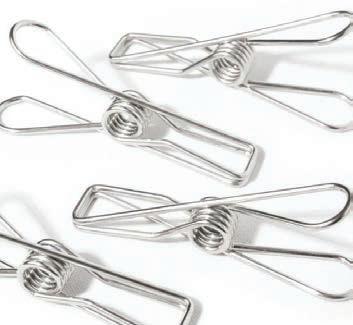
These pegs are ideal for people with sore joints. The easy spring helps with opening and closing.

biome.com.au
Ezy Storage Soft Grip Clothes Pegs
These durable, UV resistant, ergonomically designed, non-slip pegs make hanging out the washing hassle free.
bunnings.com.au
Using the washing machine
Elevate front loading washing machines to waist height or install a washer stand. If the dials become hard to turn or the numbers are difficult to see, use contrasting stick-on dots to help you see and feel when the dial is on, off or set to the right wash program. You can also buy handy dial turners to help you.
Ironing
Fold clothes as you remove them from the line to reduce ironing. Consider buying clothes that don’t need ironing.

Daytek Porta-Line Folding Clothes Airer

This compact indoor/outdoor dryer has 25 meters of drying space, with four coat hanger holes and a drying net for delicates.
mitre10.com.au
Sunbeam EasyGlide Soleplate Iron

The soleplate with channeling for steam distribution means less ironing. If you forget, the iron automatically switches off.
Unilux Laundry Pedestal With Lock
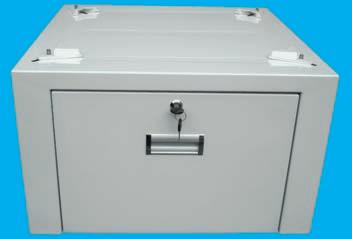
The pedestal raises your washer or dryer to a better working height when loading or unloading your laundry.
thegoodguys.com.au target.com.au

38 In the laundry
In the lounge
Questions to consider:
Is your floor free of clutter?

Are rugs creating a trip hazard?
Do you struggle to hear the TV?
Do you find it difficult to hear conversation at parties?


Do you find background noise makes it harder to hear?
Do you find TV remotes hard to use?

Is the TV complicated to navigate?
Do you use large text to help you read on your computer?
Do you find larger buttons and text on keyboards and phones make them easier to use?
39
Plan
Prepare
Pace
Top Tip
Assistive products like magnifiers, amplifiers and bright lighting can help you keep in touch with friends and family, browse the internet, relax with a book and enjoy your favourite TV shows.
Posture
Set up your chair so that it’s the right seat depth and height for you. If you sit here to read, position a light so that it illuminates the page, but doesn’t shine into your eyes. If you sit here to watch TV, make sure your head and neck are in a comfortable, neutral position and that you can easily reach essential items like remotes and instructions. Try positioning a side table so that you can safely reach drinks and snacks too.
Position the chair you prefer to use when crafting or writing so that the natural light from the window is behind you to reduce glare. If you use light coloured needles or pins, make items more visible by setting up a table or lap tray with a black non-slip mat to create contrast.
Keeping your brain stimulated is essential for living a fulfilling, healthy life. It’s never too early or too late to start, as brain matter can be improved and protected at any age by improving heart health, being physically active, engaging in mental challenges, eating a healthy diet and enjoying social activities.
We are not designed to sit in a chair for long periods of time. A supported, relaxed posture prevents static muscle contraction that can cause pain and stiffness due to a build-up of toxins and a lack of oxygen supply to the muscles. When sitting, blood flow is sluggish, negatively impacting heart health, brain function and the muscles in your hips and back. Having a chair and desk that is set up for you is important but standing and moving around regularly is the key to maintaining health and wellbeing.
40 In the lounge
Simple solutions
A few simple products will help you relax and enjoy being in the lounge. You can see some suggestions to help you in the lounge below.
Using TV remotes
A range of simplified television remotes with large buttons work with any television that has an existing infrared remote. Using these types of TV remotes and trying headphones connected to your TV can make it easier to watch and hear your favourite shows.

NuraLoop Headphones

Nura’s technology measures your unique hearing, then adapts the sound specifically to you and your ears.

nuraphone.com
In-Ear Headphones

Compact water-resistant headphones with high-quality sound and exceptional battery-life.
LP Easy Learning
TV Remote
Simplified TV remote control that can be used with televisions which have an existing infrared remote.
thegoodguys.com.au shop.visionaustralia.org

In the lounge 41
Sony True Wireless
Seeing and holding crafts and games
Vision Australia has an online store that sells a range of items to help you see small crafts and needles. There are standard sized playing cards that have large symbols and numbers or you can buy larger playing cards. A variety of playing card holders reduce strain on your hands and wrists for long games.
Self-threading Machine Needles
Make using the sewing machine easier with these self-threading needles designed for your machine.


shop.visionaustralia.org
Self-threading Needles

Place the thread across the V shape at the top of the needle then pull it down to slot the thread in.
shop.visionaustralia.org
Philips Wireless TV Headphones

Wireless headphones featuring speaker driver for high performance sound and FM wireless transmission that can pass through walls.
www.bunnings.com.au
Korbond Threaded Needle Kit
This pre-threaded needle set makes it easier to sew without the hassle of trying to thread a small needle.
woolworths.com.au
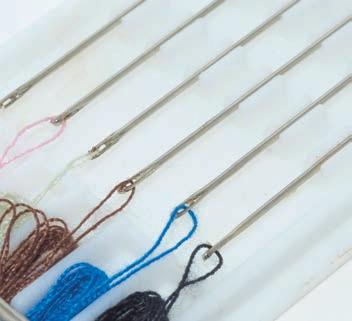
42 In the lounge
Holding and reading books
Your neck, arms and wrists can get tired when you’re reading. A simple book stand can alleviate strain and allow you to sit closer to your book. Many books, diaries and calendars are now printed in large print to make them easier to read. Local libraries and bookstores have large print books available too. Kindle eReaders have accessibility features like larger font, greater contrast, a text to speak function and also play audiobooks for you.
Handsfree Book Seat
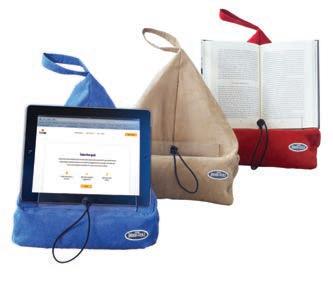
The cushion will mould and shape to sit at any angle on any surface that can support books, tables, laptops, magazines, etc.
thebookseat.com.au
Opti Large Index Playing Cards
Standard size playing cards with large print numerals and symbols making the game accessible for all.
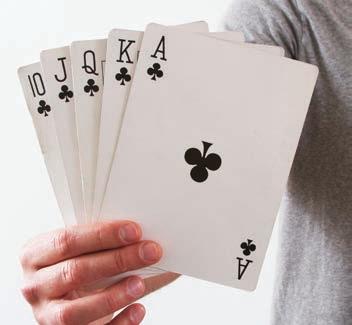

Jumbo Playing Cards
Better than regular cards as they are easier to hold, see and read with larger suits icons and numbers.
superpharmacyplus.com.au shop.visionaustralia.org
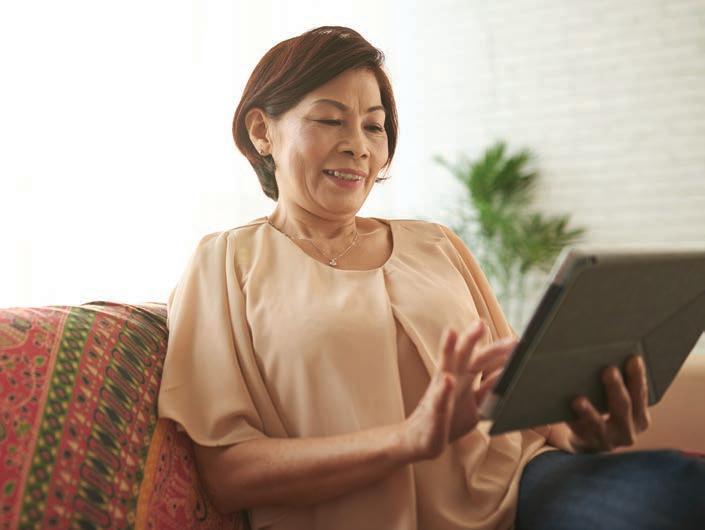
Set of 2 Aidapt Playing Card Holders
Can be placed on the table or held in your hand, they hold up to 15 cards and makes playing easy.
superpharmacyplus.com.au

In the lounge 43
In the bedroom
Questions to consider:
Do you have a personal emergency response alarm?
Do you have a plan if you feel unwell during the night?
Do you sit on the side of the bed, stretch and move your legs to wake up your body and mind before standing to start your day?
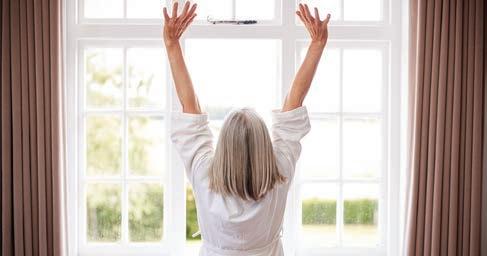
Do you have a bedside lamp that is touch or voice activated?

Do you have enough light to see your way around?
Do you use clips or cord organisers on your bedside table to make cords and switches easy to access?
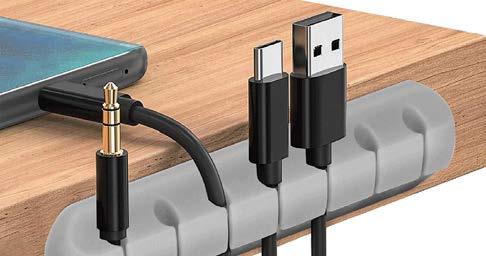

Top Tip
The most important thing is to keep regular sleep hours. Try to go to bed at about the same time every night and get out of bed about the same time every morning. An alarm clock can help with this. Avoid sleeping in, even if you have had a poor night’s sleep and still feel tired.
44 About your guide
44
Set up your bedroom so that you have a stable bedside table where you can keep a torch that’s easy to access. Make sure the journey between your bed and the door is clutter free and easy to navigate.

Doonas or duvets are lighter than blankets and can make changing the bedding easier. Some bedding now comes with labels to help you see where the top and bottom are, as well as having handy loops to help them stay in place.
To help you wake up and feel fresh, enjoy some sunlight early in the morning and throughout the day. Exercising early in the morning and outside also improves your sleep at night.
Your mattress height is best for you when the top of it is just below your knees. You should be able to put your feet flat on the floor with your knees bent at 90 degrees to easily get in and out of bed. Try rearranging your wardrobe so that everyday items are at an accessible height for quick and easy dressing.
In the bedroom 45
Pace Posture Prepare Plan
Simple Solutions
Changing bed linen
If your bed is too low to the floor (below knee height), try raising it up using bed raisers, longer legs or castors to make it easier to change the linen.
If your bed is on casters, use your knee to move the bed out from the wall. You can also permanently position the bed away from the wall if it doesn’t have castors.
Try folding your sheets so that they can be unfolded across the bed, rather than shaking them out. Place a chair or bench at the end of the bed so that blankets can easily be rolled up the bed.
Instead of lifting the mattress, kneel beside the bed and slide your forearm underneath it to tuck sheets in. Only tuck a flat sheet in at the bottom of the bed to make it easier to get in and out.

‘Move It’ Black Bed Leg
These strong and sturdy bed legs are ideal for use on carpet as the wheel has low push effort.
bunnings.com.au

46 In the bedroom
Philips Large Display Alarm

This clock radio has a digital FM tuner with 10 presets and a large display and built- in power. Two preset alarms. Wake to radio or buzzer.
thegoodguys.com.au
Seeing at night
Plug in a sensor night light to guide you on your way to and from the toilet and leave the bathroom light on to help you see.
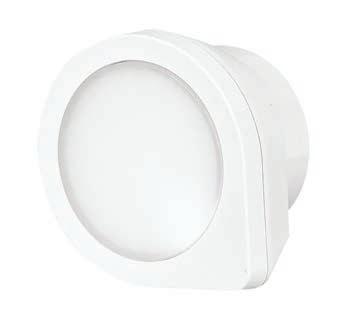
Sleeping
Try not to use ‘blue light’ devices like smart phones, tablets, or computers, or expose yourself to other bright light 1-2 hours before bed to prepare your brain and body for sleep.
Aim to go to bed and wake up at the same time every day (including weekends) to support your body’s natural sleep rhythm. Respect your tendency to go to bed earlier or later when figuring out the best time for you. Limit daytime naps to 20 minutes and don’t nap later in the day. The best time for a nap is 1-1:30 pm if you’re an early riser or 2:30-3pm if you’re a late riser.
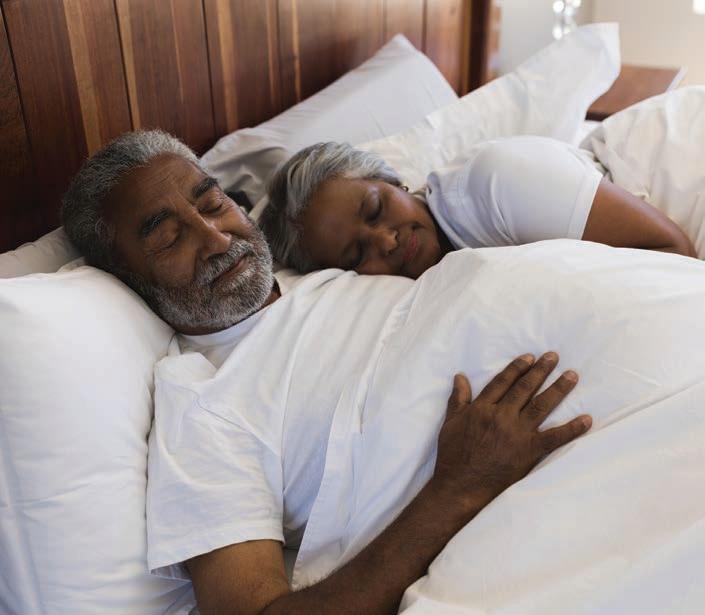
Twin Pack Arlec Mini Q-Shaped Auto Night
These night lights are ideal for bedrooms, hallways, stairs and bathrooms, with auto on and off function.
bunnings.com.au
In the bedroom 47
Outside the house
Questions to consider:
Do you wear well-fitted, low heel shoes with a non-slip sole?
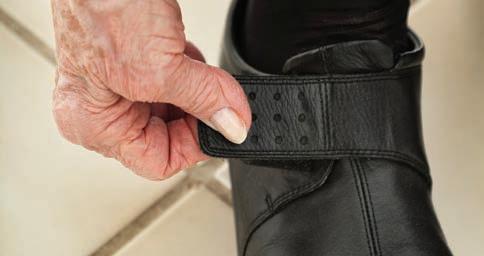
Do you have sturdy, properly fitted handrails by the stairs and at entrances to your home?

Can you clearly see the edges of your outdoor steps?
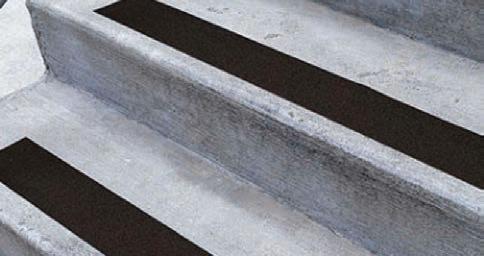
Do your steps have a non-slip surface on them?
Do you use a key turner? Could this make unlocking your doors easier?

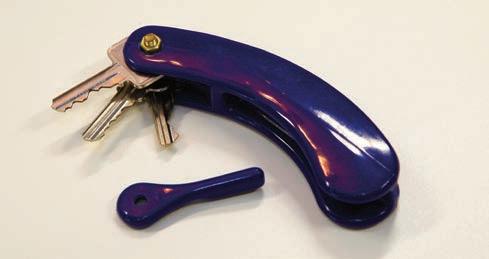
48
Top Tip
Having bright motion sensor lighting near the entrance to your home and along pathways increases home security and night time visibility.
Plan
When deciding what to plant in your garden, choose low maintenance native plants and consider installing a watering system. Hydroponic gardens reduce the need for watering or heavy digging. Plan to install a pulley system to adjust the height of hanging baskets.
Prepare
Prepare your body for working in the garden by doing some gentle warm up exercises and simple stretches. Make sure you can see your way around by installing a high wattage bulb to maximise light in dark spaces.
Pace Posture
Set your reticulation on a timer to reduce the need to drag a hose or lift a heavy watering can. Consider turning your garden into a ‘no dig garden’ made from organic material, compost, newspaper and lucerne hay.
Stepping backwards and forwards when using a weeder or hoe is safer than reaching and pushing using your arms and back. Set up your garden storage areas so that everything is within easy reach (waist to shoulder height) so you don’t have to bend down or stand on tip toes.
Outside the house 49
Simple solutions
A few simple products will help you enjoy getting outside and into the garden. You can see some suggestions to help you outside your house below.
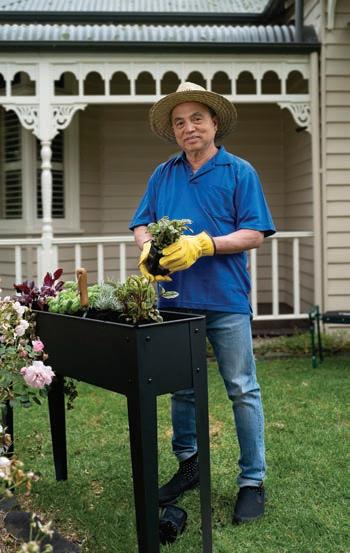
Using keys and door locks
Replacing small latches or handles on cupboards, drawers and doors with a lever or D-shape handle makes them easier to open and close. Try putting a magnetic door latch on your front and back door to hold them open while you’re going in and out of the house.
This tree pruner is ideal to reach and cut high branches safely while keeping both feet on the ground.

bunnings.com.au
This long handle hoe has greater grip and control and an extra-long timber handle for superior reach.

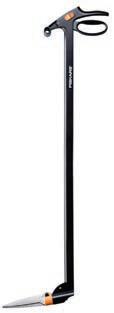


bunnings.com.au
These long handle shears are ideal for hedge trimming with lightweight and durable FiberComp™ handles.

mitre10.com.au

50 Outside the house
Fiskars PowerGearX Tree Pruner
Cyclone Dutch Hoe Long Timber Handle
Fiskars PowerGear II Hedge Shear
KeySmart Key Organiser

This key organiser helps people with reduced hand function or grip to turn a door key more easily. Made with aircraft-grade aluminium.
bunnings.com.au
Gardening
Magnetic Sphere Door Stop

A high quality door stop that prevents doors and handles marking walls and keeps doors open for you.
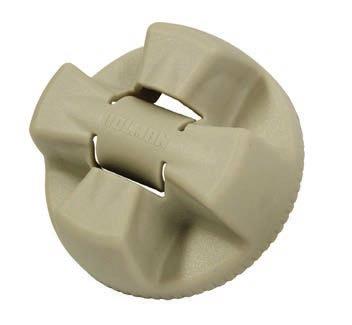

bunnings.com.au
Holman Ergonomic Tap Handle
The round outer edge is easy to grip and helps turn taps that are hard to open or close.
bunnings.com.au
Using garden tools with ergonomic long handles such as pruners, cutters, and trowels and installing raised garden beds reduces the strain on your joints, the need to bend or having to get down low. Try using a gardening trolley and stool with a kneeling board so you can keep the tools you need with you and sit or kneel comfortably to garden.
Whites Round Pot Trolley

This pot trolley helps you reduce heavy lifting so you can easily and safely reposition your potted plants.
bunnings.com.au
Fountain Products Raised Garden Bed
This raised garden bed makes planting flowers, herbs and vegetables so convenient with detachable legs for different heights.
bunnings.com.au
Sherlock Poly Cart
Suitable for the home gardener, this cart is ideal for carting potting mix, mulch, planters or waste.
bunnings.com.au

Outside the house 51
Home maintenance
Try reducing home maintenance with simple tricks like installing gutter protection to stop leaves collecting. If your shower head has restricted flow, it could be due to mineral build up. Attach a plastic bag filled with vinegar over the shower head and leave over night to dissolve build up.

Another great trick if you’ve stripped a screw or your screwdriver is too small, is to place a rubber band over the tip of the screwdriver to provide the extra traction you need to turn the screw.



StayMesh Ultra Gutter Guard
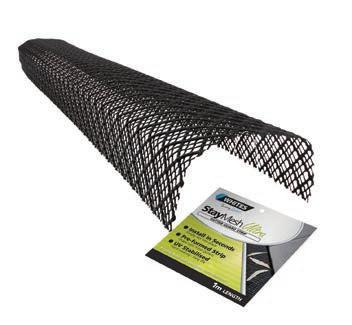
A fast and easy way to keep leaves and debris out of your gutter. No hardware or tools are required for fitting.

bunnings.com.au
2 3
52 Outside the house
1
Out and about
Questions to consider:
Could you do your heavy shopping online and have it delivered to you?

Do you make an effort to sit less and move often throughout the day?

How do you stand when loading and unloading the car with shopping?
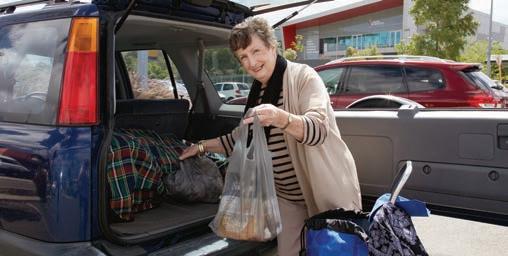
Can you stand front-on and hold items close to your chest?
Do you bend your knees when lifting?
Do you keep your keys, wallet and bag in the same place at home so that you always know where they are? Could you designate a spot by the door with a basket to keep them all together?

What are Assistive Technologies? 53
53
Top Tip
Know your local area and what’s available to you by finding out where you can park easily, find accessible bathrooms and enjoy strolling on level pathways.
Plan to shop outside peak times so that the shops aren’t as busy and it doesn’t take as long. Shop in familiar stores to reduce walking and the time it takes to find what you’re looking for. Take reusable shopping bags with long straps as they’re easier to carry over your shoulder.
Maintaining physical fitness and flexibility is important throughout life, so you can continue to do the things you love. Progressive strength training has been shown to have a huge positive impact on wellbeing and quality of life.
Collect all necessary items for going out in advance. Try shopping little and often rather than doing one big shop. Alternating between energy intensive and lighter tasks can conserve your energy.
Ask staff to help you lift heavy items from shelves, in and out of the trolley, and into the car. Avoid awkward postures when loading and unloading the car. Store items so they’re easy to access when you need them.
54 Out and about
Pace Posture Prepare Plan
Simple solutions
A few simple products will help you enjoy getting out and about. You can see some suggestions to help you explore your local area below.
Getting in and out of the Car
Standing up from a car seat can be difficult without having something to hold onto. Try using a transfer bar in the side of your door and a swivel cushion on your seat to reduce the effort it takes to lift your legs out and around to stand up.

If you’re in an unfamiliar car and find you are stuck in the seat or having trouble sliding your bottom in, place a bin liner or plastic shopping bag on the car seat to help you to slide in and out. Keep one with you for travelling.
Handy Bar
This car handy bar is a portable, metal handle to help you get in and out of the car.
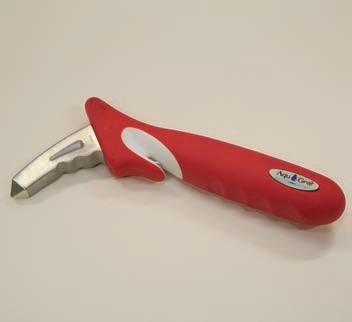
Transfer Swivel Cushion
A low friction cushion that allows you to swivel in your seat to get in and out of the car more easily.


Seat Belt Helper
The seat belt helper extends the handle of a seat belt, reducing hip and shoulder twisting when reaching.
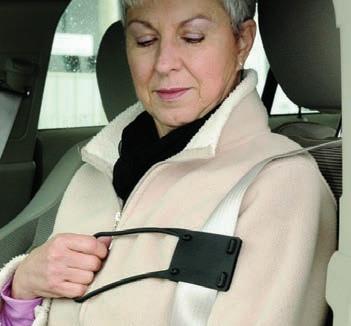
Out and about 55
thinkmobility.com.au agedcareandmedical.com.au
thinkmobility.com.au
Carrying shopping bags
Use bigger joints, like your shoulders and wrists, to hold bags rather than straining smaller finger joints.
Using a shopping trolley provides you with stability and reduces your need to carry items to and from the car or around the shops. Some people choose to use their laundry trolley to transport items from the car to the house.

A seated walker may also be helpful while you’re out shopping so you can sit when you need to. You can also carry a few items in the basket under the seat so you have your hands free. A physiotherapist assessment is recommended before choosing a suitable walker.

Finding the car
Take a photo of where you parked your car using your mobile. If the car park issues a ticket, write the car park letter and number on the back. You could also park your car at the edge of the car park and near a visual landmark so you get some extra exercise and have a reference point to help you find your car.

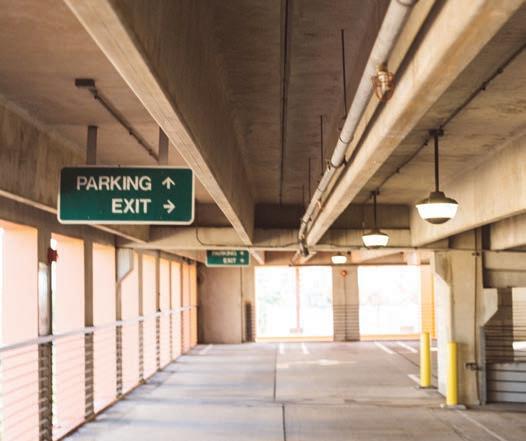
56 Out and about
Keeping fit and active
Incidental exercise is one great way to have a positive impact on how much you move every day. Use the time you spend watching TV as exercise time. Set yourself a routine, like standing up and sitting down ten times at the start of each show, walking across the room and back in ad breaks or toe raises holding onto the kitchen bench while boiling the kettle in between shows. Research has found that reducing the time spent inactive by increasing the time spent walking or standing every day is more effective than one hour of physical exercise. To help build your automatic remote memory fitness, follow a routine to help reduce what you need to remember each day.

Top Tip
Get into good habits by placing items in the same place, putting things away and doing tasks in the same order each day. Find more helpful suggestions for healthy ageing at

www.LiveUp.org.au
Take the quick quiz and find personalised advice and local activities, groups and classes for your needs, so you can age your way.


Out and about 57
Your personal home safety plan
Just like a home fire safety plan, your personal home safety plan is designed to be discussed with close family and friends. Here are a range of questions for you to answer that will help you create your action plan for those times in life when the unexpected happens.
Community safety
Do you and your neighbours notice when lights are not switched on at night?
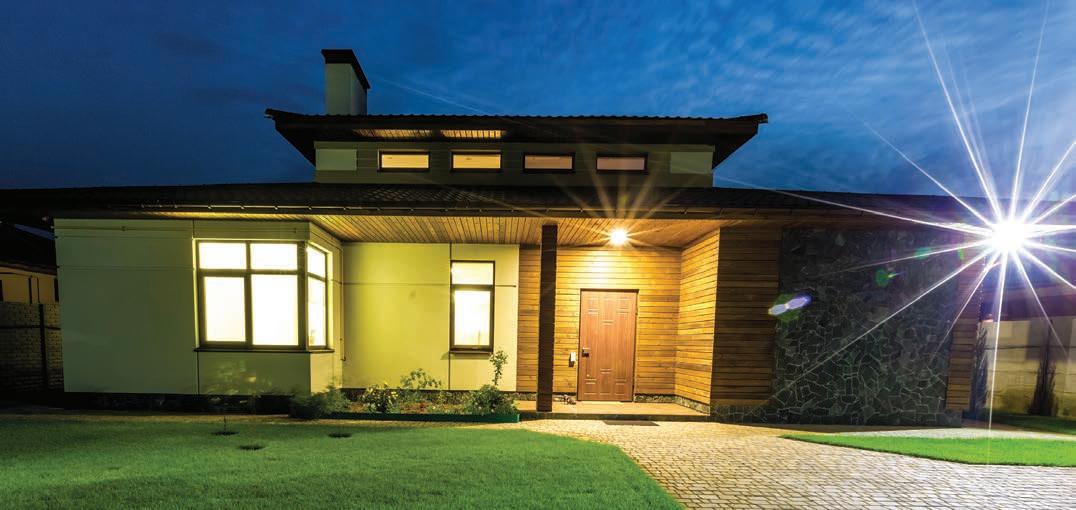
Do you tell each other if you are going away?
Do you carry a small identification card with you listing who to call in an emergency and important medical information?
Do you have a list of important names and phone numbers next to your phone at home or stored in your favourites on your mobile to quickly call help in an emergency?

58 Personal home safety plan
Home safety
Do you leave simple reminder notes around the house, such as ‘check door is locked at night’ or ‘check oven is off’?
Do you carry a small note book to record things to do and important events that you want to remember?
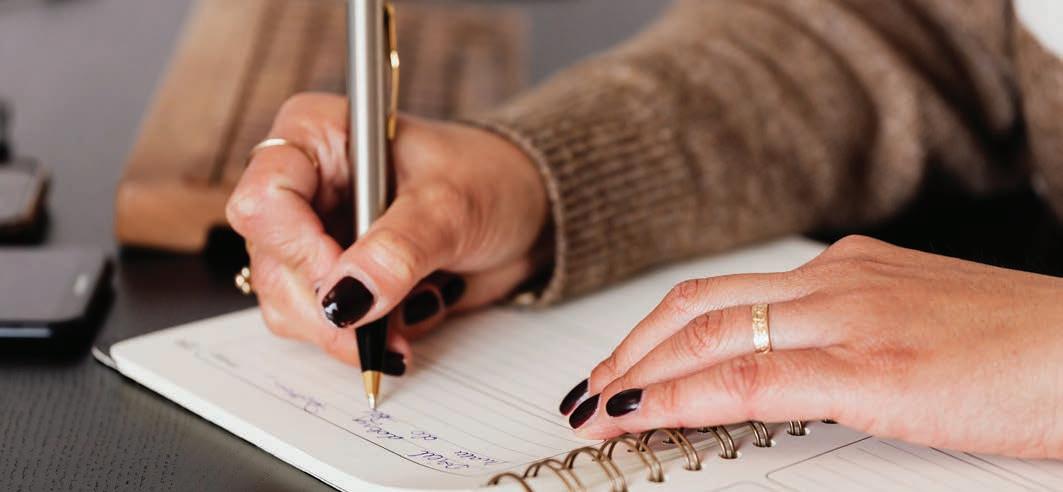
Do you carry your mobile with you when you are out in the shed or garden to call for help if you need it?
Have you considered using an emergency call system? This means wearing a device at all times with a button that can be pushed in an emergency to summon help.
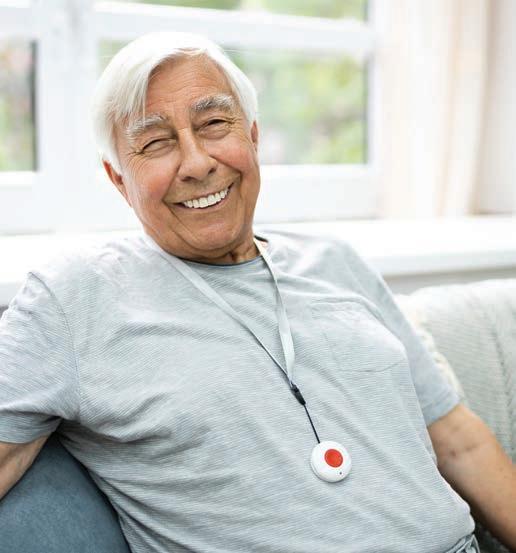

Have you hidden a key outside or in a key safe so your friends and family or the emergency services can access your home?
Do you have working smoke alarms and are they up to current standards?
Personal home safety plan 59
Personal safety
Do you have an emergency information pack on your fridge?
Do you have a note about any medical alerts on the fridge?
Do you have an enduring power of attorney (EPOA) for health and finances?


Do you keep a phone at your bedside or your mobile charged by your bed at night?
If you were to fall, do you know how to get up off the floor? Have you practiced it?

Can you crawl to a place where you can reach a blanket, access drinking water and a way to call for help?
Top Tip
An emergency information pack should contain a list of your medications, the name and number of a local neighbour, friend or family member, a list of important health and personal information you need the emergency services to know and the name of your EPOA.
60 Personal home safety plan
Allied health professionals
Allied health professionals are university qualified health practitioners with specialised expertise in preventing, diagnosing and treating a range of conditions and illnesses.

Allied health services are readily available in your community. Access to these services may be supported through government programs or other sources of funding including the Department of Veterans Affairs, Medicare, My Aged Care, private health insurance and community health services.
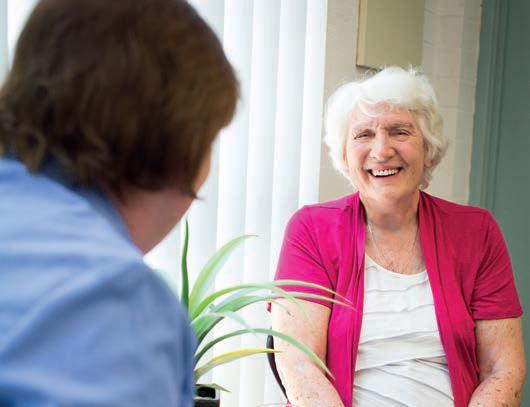
What types of allied health professionals are there and when should I consider getting them involved?
Speak to your doctor in the first instance as your medications and other health conditions may need to be reviewed before an occupational therapist can be referred.
Occupational therapy (OT)
The primary goal of an OT is to enable you to participate in the activities of everyday life. This could mean adapting a task, modifying your environment or addressing personal factors to increase your independence and wellbeing.
If you think your home may require some equipment or modifications, like grab rails or a shower chair, an OT can help you decide what you need and where.
Questions to consider:
Would you be interested in learning if there is an easier or safer way to complete an everyday activity or task?
Are you struggling to cope with some or all aspects of daily activities?
Have you recently had a fall or feel at high risk of falling?
Would you like to get more information about special cushions or equipment to protect your skin or any pressure areas?
Would you like to discuss modifications to your home like ramps and bathroom mobility products or perhaps specialised equipment such as electric scooters, electric beds and wheelchairs?
If you answered yes to any of these questions, then you may like to speak to your doctor about being referred to an OT.
Allied health professionals 61
Physiotherapists (Physio)
A physio assesses, diagnoses, treats, and works to prevent disease and disability through physical means. Physios are experts in movement and physical function. Speak to your doctor first, as health conditions and medications may need to be reviewed before a physio can be referred.

Questions to consider:
Do you require advice on mobility equipment like walking sticks or walkers?

Have you recently had a fall or feel at high risk of falling?
Do you feel you have reduced endurance when walking and doing daily activities?
If you answered yes to any of these questions, then you may like to speak to your doctor about being referred to a physio.
Speech pathologists
As we age our vocal cords can become less elastic and the larynx or voice box muscles can weaken, making it difficult to talk. A speech pathologist is trained to focus on speech, language, voice, cognition, and swallowing difficulties. They identify, assess and diagnose communication difficulties and help restore how you express yourself and how you listen to and communicate with others.
Questions to consider:
Do you find that your voice is not as strong as it used to be and/or people find it hard to hear what you are saying?
Have you had some health problems related to your head, neck or throat that have changed the way you talk, eat or swallow?
Do you find that your hearing is not as good as it used to be? Is it affecting how you talk to people and whether you hear what they are saying?
If you answered yes to any of these questions then you may like to speak to your doctor about being referred to a speech pathologist.
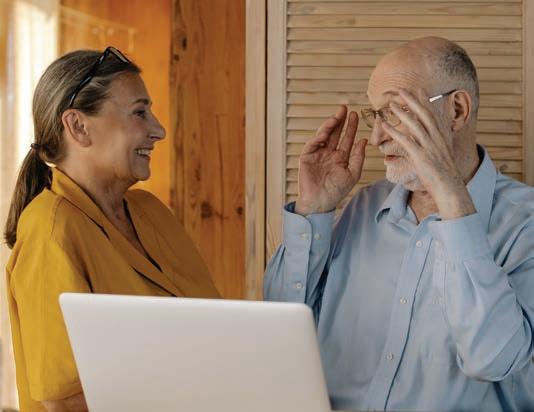
62 Allied health professionals
Podiatrist
A podiatrist is an expert in diagnosis, treatment, prevention and management of medical conditions and injuries of the foot, ankle and lower limb.


Questions to consider:
Do you require advice on appropriate and more suitable footwear?

Do you have medical conditions that may affect your feet such as diabetes, open sores or red painful areas on your foot or ankle?
Are you concerned about your routine foot and toenail care?
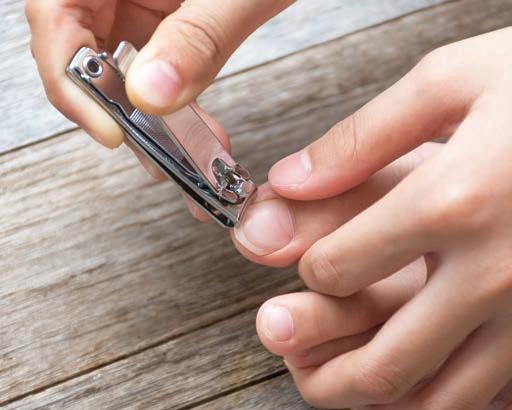
If you answered yes to any of these questions then you may like to speak to your doctor about being referred to a podiatrist.
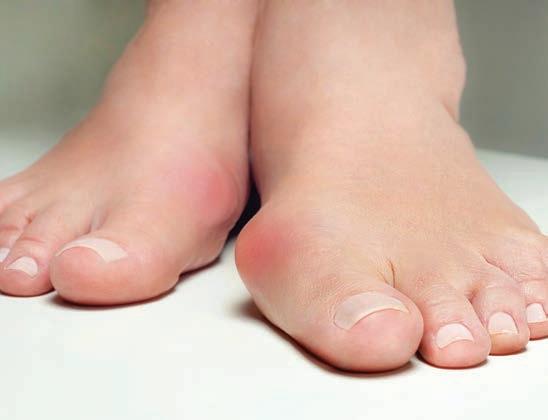
Allied health professionals 63
Useful resources
LiveUp
www.liveup.org.au
Find expert information on healthy ageing and staying well, as well as personalised suggestions for assistive products, local social activities and fun exercise classes so that you can age your way, today.
iLA
www.ilaustralia.org.au
iLA supports the community to make genuine and informed decisions through the provision of independent information, navigation, and capacity building initiatives.
KeepAble
www.keepable.com.au
KeepAble is an online collaborative hub for practical content that supports home and community care providers to deliver wellness and reablement approaches.
The site aims to assist providers to work with and empower older people to optimise their independence and live life well for longer.
Village Hubs
www.ilaustralia.org.au/our-services/villagehubs
iLA is the national grants manager for the administration of the Village Hubs Grants Fund, an initiative of the Australian government’s Seniors Connected Program. Each hub is communityled and provides innovative opportunities for older people to improve their mental and physical health through the benefits of increased community connections.
ATChat
www.atchat.com.au
Connect with other assistive technology users and get access to peer-led information about how people use AT to live, play and work.
National Equipment Database
www.askned.com.au
Ask NED for information about AT products and services that help people stay independent and improve their quality of life. You’ll find details about different types of AT and where you can find suppliers.
64 Useful resources
geat2GO
www.indigosolutions.org.au/funding/commonwealth-home-support-programme/geat2go
An Australian Government initiative under the Commonwealth Home Support Programme (CHSP). It allows older people to access helpful devices and equipment to continue living independently and make daily tasks easier.
Choice
www. choice.com.au
CHOICE is a consumer advocacy group, which tests brands and products. They produce buying guides and CHOICE recommended products based on their independent testing. Consumers can subscribe to their online information.
Australian Cyber Security Centre
www.cyber.gov.au
To ensure your computer is set up safely, the Australian Government and the Australian Cyber Security Centre provide lots of helpful information to help you stay safe online. Head to their website for all the latest information.
Don’t fall for it
www.health.gov.au/resources/publications/dont-fall-for-it-falls-can-be-prevented Falls can be prevented! This booklet provides advice to older Australians, their families and carers on preventing falls.
Vision Australia
www.visionaustralia.org
Vision Australia is a leading national provider of blindness and low vision services in Australia. They work in partnership with Australians who are blind or have low vision to help them achieve the possibilities they choose in life.
Dementia Australia
www.dementia.org.au
Dementia Australia represents 472,000 Australians living with dementia and almost 1.6 million Australians involved in their care. Download the free information kit via their website.
Useful resources 65
References
Dementia Australia (2016), Your Brain. Retrieved from Your Brain Matters: www.dementia.org.au/risk-reduction
Vision Australia. Retrieved from Vision Australia: www.visionaustralia.org
Better Health Victoria. (2012, November). Ageing Muscles Bones and Joints. Retrieved from Better Health Victoria: www.betterhealth.vic.gov.au/health/ conditionsandtreatments/ageing-muscles-bones-and-joints
CAOT Resources. (2016). Retrieved from Canadian Association of Occupational Therapists: www.caot.ca
HDG Consulting Group (Aug 2014), Enabling the use of easy living equipment in everyday activities. A guide for Home and Community Care services in Victoria. Municipal Association of Victoria & Victorian Department of Health.


O’Connell, H. (2016). Developing Best Practice. A WA HACC Home Modifications and Assistive Technology Project PowerPoint Presentation. Perth: ILC WA (Now called Indigo Australasia).
WHO. (2004). A Glossary of Terms for Community Health Care and Services for Older Persons. Japan: World Health Organisation.
ABC News. (September 2019) What’s The Minimum Amount of Exercise You Need to Stay Healthy? www.abc.net.au/everyday/whats-the-minimum-amount-of-exercise-i-need-tostay-healthy/10639592
66
References
Acknowledgements
This guide was developed with funding from the WA State and Commonwealth Governments as part of the Home Modification and Assistive Technology Project 2013-2018.

Copyright© Making Choices, Finding Solutions Version 7 (February 2023) - Independent Living Assessment Incorporated. ABN 41 266 326 832.
All rights reserved. No part of the material protected by this copyright notice may be reproduced or used in any form or by any means, electronic or mechanical, including photocopying, recording or by any information storage and retrieval systems, without the prior written permission of the copyright owner.
For a full list of ‘Terms of use’ please go to: www.liveup.org.au/terms-of-use/
iLA wish to thank the various photographers of Pexels.com and Unsplash.com for their contributions to this brochure.
Acknowledgements 67

68 About your guide Contact us LiveUp 7 Tully Road, East Perth, Western Australia, 6004 Telephone: 1800 951 971 Email: support@liveup.org.au Web: www.liveup.org.au V1.2/02-2023 This publication has been printed to the highest environmental standard, utilising solar electricity and printed on 100% recycled FSC certified paper.





 Powered by
Powered by


































































































































































































































































